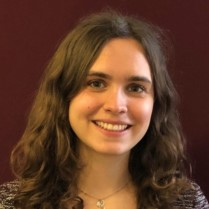Unsupervised Deep Learning and Its Applications in Imaging Processing
A special issue of Journal of Imaging (ISSN 2313-433X).
Deadline for manuscript submissions: closed (30 April 2022) | Viewed by 12697
Special Issue Editors
2. LIPN-CNRS UMR 7030, University Paris 13, 99 Avenue J.-B. Clément, 93430 Villetaneuse, France
Interests: unsupervised learning; satellite images; medical images; change detection; deep learning; time series prediction; collaborative learning
Special Issue Information
Dear Colleagues
Nowadays, deep learning algorithms are the most successful methods in image processing, thanks to an ever-increasing number of networks and architectures that have proven more efficient than anything designed before. Yet, one major weakness known to deep learning methods is their need for huge amounts of data to be trained and show good performance. Another key element to their success lies in the manual annotation of the training data. Indeed, most deep learning methods used in image processing are supervised. It implies that for applications where no or not enough annotated images are available, there is a real need for the development of unsupervised deep learning methods able to analyse them! This is the case for various applications such as medical image analysis, remote sensing analysis, and many segmentation tasks, where the diversity of images and tasks to be performed often makes it impossible to have enough annotated images to train a supervised deep learning architecture that will lead to good performances. Furthermore, even when only very few annotated images are available, the question of the labelling reliability is also an issue for tasks that require high accuracy.
Given these very concrete problems, unsupervised deep learning methods—or self-supervised methods as they are sometimes called—open the possibility of quickly processing images that would have been otherwise impossible to analyse with regular deep learning methods. Yet, there are many challenges to the development of such methods that so far mostly rely on reconstruction loss functions from autoencoder models, and also suffer from issues similar to the ones faced by traditional unsupervised methods such as linking the elements of interest found by an unsupervised method with actual classes that are relevant to a real-world application.
For all these reasons, we invite you to submit your work related to unsupervised or weakly supervised applications of deep learning for image analysis, regardless of the field of application.
Prof. Dr. Jérémie Sublime
Prof. Dr. Hélène Urien
Guest Editors
Manuscript Submission Information
Manuscripts should be submitted online at www.mdpi.com by registering and logging in to this website. Once you are registered, click here to go to the submission form. Manuscripts can be submitted until the deadline. All submissions that pass pre-check are peer-reviewed. Accepted papers will be published continuously in the journal (as soon as accepted) and will be listed together on the special issue website. Research articles, review articles as well as short communications are invited. For planned papers, a title and short abstract (about 250 words) can be sent to the Editorial Office for assessment.
Submitted manuscripts should not have been published previously, nor be under consideration for publication elsewhere (except conference proceedings papers). All manuscripts are thoroughly refereed through a single-blind peer-review process. A guide for authors and other relevant information for submission of manuscripts is available on the Instructions for Authors page. Journal of Imaging is an international peer-reviewed open access monthly journal published by MDPI.
Please visit the Instructions for Authors page before submitting a manuscript. The Article Processing Charge (APC) for publication in this open access journal is 1800 CHF (Swiss Francs). Submitted papers should be well formatted and use good English. Authors may use MDPI's English editing service prior to publication or during author revisions.
Keywords
- clustering
- autoencoder
- unsupervised learning
- self-supervised learning
- automated segmentation
- semi-supervised learning
- weakly supervised learning
Benefits of Publishing in a Special Issue
- Ease of navigation: Grouping papers by topic helps scholars navigate broad scope journals more efficiently.
- Greater discoverability: Special Issues support the reach and impact of scientific research. Articles in Special Issues are more discoverable and cited more frequently.
- Expansion of research network: Special Issues facilitate connections among authors, fostering scientific collaborations.
- External promotion: Articles in Special Issues are often promoted through the journal's social media, increasing their visibility.
- Reprint: MDPI Books provides the opportunity to republish successful Special Issues in book format, both online and in print.
Further information on MDPI's Special Issue policies can be found here.







